
https://ebookmass.com/product/electromagnetic-technologies-

Instant digital products (PDF, ePub, MOBI) ready for you
Download now and discover formats that fit your needs...
Food Fortification in a Globalized World M G Venkatesh Mannar
https://ebookmass.com/product/food-fortification-in-a-globalizedworld-m-g-venkatesh-mannar/
ebookmass.com
Food Waste Recovery: Processing Technologies, Industrial Techniques, and Applications 2nd Edition Charis M. Galanakis
https://ebookmass.com/product/food-waste-recovery-processingtechnologies-industrial-techniques-and-applications-2nd-editioncharis-m-galanakis/ ebookmass.com
Electromagnetic Field Theory and Transmission Lines G. S. N. Raju
https://ebookmass.com/product/electromagnetic-field-theory-andtransmission-lines-g-s-n-raju/ ebookmass.com
The Palgrave handbook of critical theory Thompson
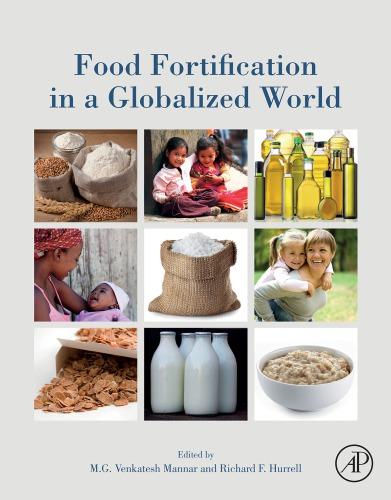
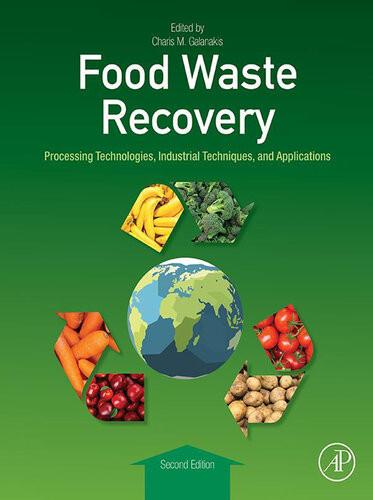
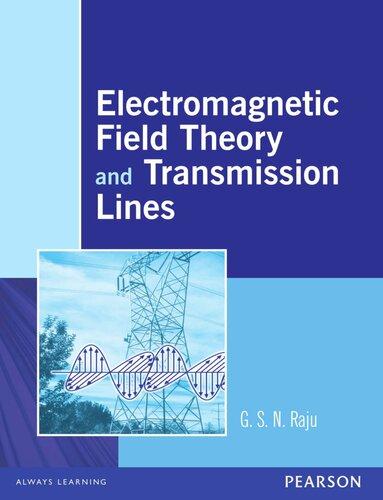
https://ebookmass.com/product/the-palgrave-handbook-of-criticaltheory-thompson/
ebookmass.com

Trust Fall Ariana St. Claire
https://ebookmass.com/product/trust-fall-ariana-st-claire/
ebookmass.com
Bone 2nd Edition G. Petur Nielsen
https://ebookmass.com/product/bone-2nd-edition-g-petur-nielsen/
ebookmass.com
Finding Purple America: The South and the Future of American Cultural Studies (The New Southern Studies Ser.) 2nd Edition Smith
https://ebookmass.com/product/finding-purple-america-the-south-andthe-future-of-american-cultural-studies-the-new-southern-studiesser-2nd-edition-smith/ ebookmass.com
A Curse of Queens Amanda Bouchet
https://ebookmass.com/product/a-curse-of-queens-amanda-bouchet-8/
ebookmass.com
Heat and Mass Transfer for Chemical Engineers: Principles and Applications Giorgio Carta
https://ebookmass.com/product/heat-and-mass-transfer-for-chemicalengineers-principles-and-applications-giorgio-carta/
ebookmass.com

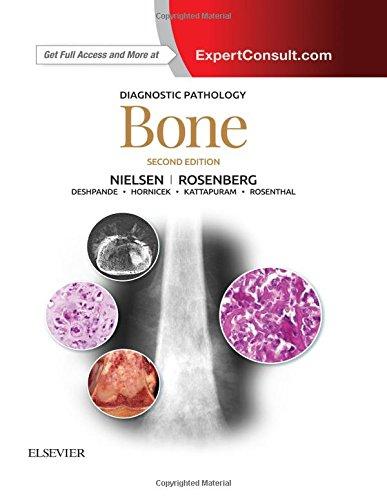
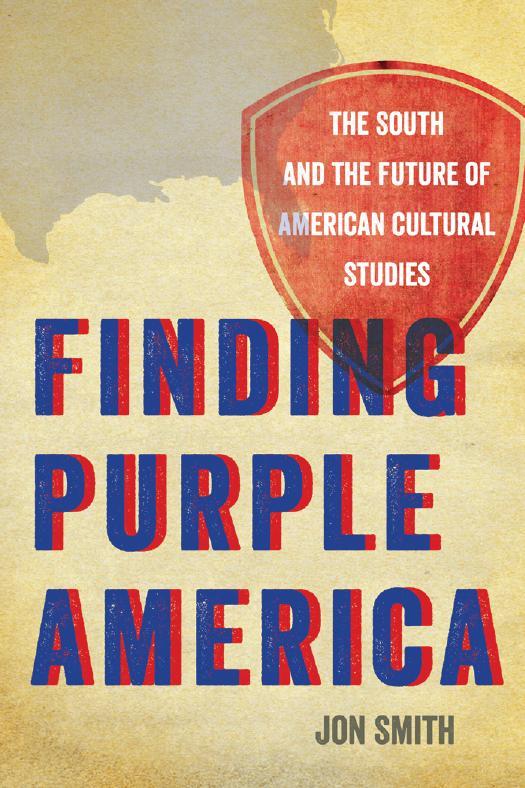

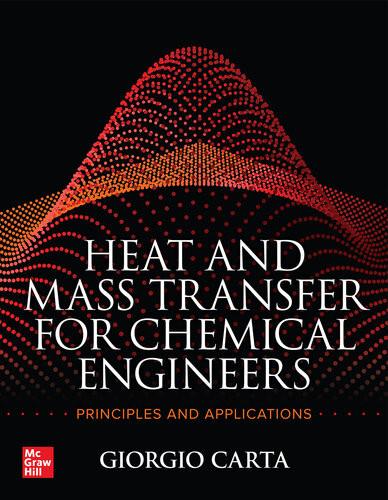
Shared Devotion, Shared Food: Equality and the BhaktiCaste Question in Western India Jon Keune
https://ebookmass.com/product/shared-devotion-shared-food-equalityand-the-bhakti-caste-question-in-western-india-jon-keune/
ebookmass.com
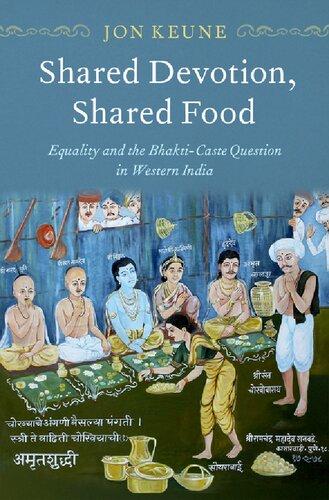

Electromagnetic Technologies in Food Science
Electromagnetic Technologies in Food Science
Edited by
Vicente M. Gómez-López
Universidad Católica San Antonio de Murcia (UCAM) Murcia, Spain
Rajeev Bhat
Estonian University of Life Sciences (EMÜ) Tartu, Estonia
This edition first published 2022 © 2022 John Wiley & Sons Ltd
All rights reserved. No part of this publication may be reproduced, stored in a retrieval system, or transmitted, in any form or by any means, electronic, mechanical, photocopying, recording or otherwise, except as permitted by law. Advice on how to obtain permission to reuse material from this title is available at http://www.wiley.com/go/permissions.
The right of Vicente M. Gómez-López and Rajeev Bhat to be identified as the authors of the editorial material in this work has been asserted in accordance with law.
Registered Offices
John Wiley & Sons, Inc., 111 River Street, Hoboken, NJ 07030, USA
John Wiley & Sons Ltd, The Atrium, Southern Gate, Chichester, West Sussex, PO19 8SQ, UK
Editorial Office
The Atrium, Southern Gate, Chichester, West Sussex, PO19 8SQ, UK
For details of our global editorial offices, customer services, and more information about Wiley products visit us at www.wiley.com.
Wiley also publishes its books in a variety of electronic formats and by print-on-demand. Some content that appears in standard print versions of this book may not be available in other formats.
Limit of Liability/Disclaimer of Warranty
The contents of this work are intended to further general scientific research, understanding, and discussion only and are not intended and should not be relied upon as recommending or promoting scientific method, diagnosis, or treatment by physicians for any particular patient. In view of ongoing research, equipment modifications, changes in governmental regulations, and the constant flow of information relating to the use of medicines, equipment, and devices, the reader is urged to review and evaluate the information provided in the package insert or instructions for each medicine, equipment, or device for, among other things, any changes in the instructions or indication of usage and for added warnings and precautions. While the publisher and authors have used their best efforts in preparing this work, they make no representations or warranties with respect to the accuracy or completeness of the contents of this work and specifically disclaim all warranties, including without limitation any implied warranties of merchantability or fitness for a particular purpose. No warranty may be created or extended by sales representatives, written sales materials or promotional statements for this work. The fact that an organization, website, or product is referred to in this work as a citation and/or potential source of further information does not mean that the publisher and authors endorse the information or services the organization, website, or product may provide or recommendations it may make. This work is sold with the understanding that the publisher is not engaged in rendering professional services. The advice and strategies contained herein may not be suitable for your situation. You should consult with a specialist where appropriate. Further, readers should be aware that websites listed in this work may have changed or disappeared between when this work was written and when it is read. Neither the publisher nor authors shall be liable for any loss of profit or any other commercial damages, including but not limited to special, incidental, consequential, or other damages.
Library of Congress Cataloging-in-Publication data applied for
Hardback: 9781119759515
Cover Design: Wiley
Cover Images: © AIexVector/Shutterstock, margouillat photo/Shutterstock, Dolgikh Pavel/Shutterstock, Phonkrit Ninchak/Shutterstock, ggw/Shutterstock
Set in 9.5/12.5pt STIXTwoText by Straive, Pondicherry, India
Contents
List of Contributors xv
Foreword xix
Preface xxi
1 Physics of the Electromagnetic Spectrum 1
Michael Vollmer
1 Introduction 1
2 Description of Electromagnetic Waves 2
2.1 Properties of Waves 2
2.2 Spectrum of Electromagnetic Waves 5
3 Propagation of Electromagnetic Waves: Geometrical Versus Wave Optics 7
4 Description of Particle Properties of Electromagnetic Radiation 10
5 Exponential Attenuation of Electromagnetic Radiation in Matter 11
6 Microscopic Structure of Matter and Origin of EM Radiation 14
6.1 UV–VIS and Atomic Spectra 14
6.2 IR and Molecular Spectra 16
6.3 X-Rays and Excitations of Inner Electrons in Atoms 18
6.4 γ-Rays and Nuclear Spectra 19
6.5 Blackbody Radiation: Generating UV, VIS, and IR Radiation from Hot Objects 20
6.6 Generation of Microwave and RF EM Waves 21
7 Interaction of EM Radiation with Food 23
7.1 Low Frequencies: RF and Microwaves 23
7.2 IR Radiation 24
7.3 Visible and UV Radiation 25
7.4 X-Rays and γ-Radiation 27
7.4.1 Atomic Photo Effect 27
7.4.2 Compton Effect 28
7.4.3 Pair Generation Effect 28
7.4.4 Probabilities for Absorbing High-Energy Radiation 29
7.4.5 Consequence of Absorption of High-Energy Photons by Matter 29
8 Outlook 31
References 31
2 Dosimetry in Food Irradiation 33
Bhaskar Sanyal and Sunil K. Ghosh
1 Introduction 33
2 Fundamentals of Dosimetry 34
2.1 What is Dosimetry 35
2.2 Absorbed Dose 35
2.3 Physical Aspects of Radiation Absorption 36
2.3.1 Photoelectric Effect 36
2.3.2 Compton Scattering 36
2.3.3 Pair Production 36
2.3.4 Interaction of Charged Particles 37
3 Dosimetry Systems for Food Irradiation Application 37
3.1 Characterization of Dosimetry Systems 39
3.1.1 Calibrating the Dosimetry System 39
3.1.2 Establishing Traceability 39
3.1.3 Determining Batch Homogeneity 40
3.1.4 Determining Uncertainty in the Measured Dose Value 40
3.1.5 Understanding and Quantifying Effects of the Influencing Quantities 40
3.2 Specific Dosimetry Systems for Food Irradiation Applications 41
3.2.1 Chemical Dosimeter (Fricke and Ceric-cerous Sulphate) 41
3.2.2 Alanine Dosimeter 42
3.2.3 Radiochromic Dosimeter 42
3.3 Role of Product Density in the Absorbed Dose 43
4 Dosimetry in Food Irradiation Facility 43
4.1 Dosimetry in Radionuclide-Based Irradiation Facility 44
4.1.1 Dose Mapping Experiment 44
4.1.2 Routine Processing of Food Product 46
4.2 Dosimetry in Linear Accelerator (LINAC) Facility 46
5 Emerging Field of Dosimetry in Low-Energy Accelerator Irradiator for Surface Treatment of Food 49
6 Conclusion and Future Outlook 50 References 51
3 Gamma Irradiation 53
Xuetong Fan and Brendan A. Niemira
1 Introduction 53
2 Characteristics and Generation of γ-rays 54
3 Compton Effect 56
4 Basic Effects on Food: Interaction of γ-rays with Matter 57
5 Dose Unit, Dose Rate, and Dose Distribution 59
6 γ-ray Facility 60
7 Applications of γ-ray Radiation in Foods 60
7.1 Improving Microbial Safety 61
7.2 Preservation of Food 63
7.3 Phytosanitary Treatment 64
7.4 Applications on Low-Moisture Foods 64
7.5 Potential Uses of γ Irradiation for Degradation of Mycotoxin and Allergen 65
8 Factors Impacting the Efficacy of γ-rays 66
8.1 Temperature 66
8.2 Atmosphere 66
8.3 Water Activity 67
8.4 Composition of Foods (Antioxidants) 67
9 Conclusion 67
Acknowledgments 68
References 68
4 Electron Beams 74
Rajeev Bhat, Benny P. George, and Vicente M. Gómez-López
1 Introduction 74
2 Accelerator as a Source of Ionizing Radiation 76
3 Working Principle of EB Accelerator 77
4 Types of Industrial Electron Accelerators 77
5 Classification of Industrial Electron Beam (EB) Accelerators 78
6 Absorbed Dose 78
7 Radiation Dosimetry 79
7.1 Theoretical Aspect of EB Dosimetry 79
7.2 Practical Aspect of EB Dosimetry 79
7.3 Dosimetry Systems 80
7.4 Calibration of Dosimetry Systems 81
7.4.1 Performance Check of Measuring Instruments 81
7.4.2 Calibration of Routine Dosimeters 81
7.4.3 Establishing Measurement Traceability to National/International Standards 82
8 Scanning Characteristics of the Electron Beam Accelerator 82
9 Depth Dose Profile of Electron Beam 82
10 Process Validation of Industrial EB Accelerator 83
10.1 Installation Qualification (IQ) 84
10.2 Operational Qualification (OQ) 85
10.3 Performance Qualification (PQ) 85
10.4 Routine Monitoring 86
11 EB Irradiation in Food Applications 86
11.1 Mechanism 93
12 Legislations on Electron Beams Application 93
13 Conclusions and Future Outlook 96
Acknowledgements 97
Conflict of Interest Statement 97 References 97
5 X-Rays 105
Francesco E. Ricciardi, Amalia Conte, and Matteo A. Del Nobile
1 Introduction 105
1.1 Thermal and Non-thermal Technologies 105
1.2 Irradiation Technology 107
1.3 X-Rays 109
2 Mechanism of Action of X-Rays 109
3 Case Study 111
3.1 Seafood Products 111
3.2 Fresh and Dried Fruit 115
3.3 Dairy Products 116
3.4 Meat-Based Foods 118
4 Effects of X-Rays on Packaging 119
5 Regulation of X-Ray Irradiation 120
6 Conclusion and Future Outlook 122
References 122
6 Ultraviolet Light 128
Sandra N. Guerrero, Mariana Ferrario, Marcela Schenk, Daniela Fenoglio, and Antonella Andreone
1 Introduction 128
2 Characterization of UV- C Dose 130
3 Rational Use of the Hurdle Approach in the Design of Food Preservation Technologies 134
3.1 UV- C light–based Hurdle Combinations 136
3.1.1 Heat 136
3.1.2 UV- C Combined with Other Novel Technologies 153
3.1.3 UV- C Combined with the Addition of Natural Antimicrobials 162
3.1.4 UV- C Combined with Sanitizers 164
4 Conclusions and Future Perspectives 170 Acknowledgments 171
References 171
7 Visible Light 181
Laura M. Hinds, Mysore L. Bhavya, Colm P. O’Donnell, and Brijesh K. Tiwari
1 Introduction 181
2 Sources 182
3 Quantifying Light Treatment 183
4 Applications of Visible Light in the Food Industry 184
4.1 Postharvest Handling 184
4.2 Food Safety 186
5 Challenges and Limitations 194
6 Conclusion 194
References 194
8 Pulsed Light 200
Vicente M. Gómez-López, Rajeev Bhat, and José A. Pellicer
1 Introduction 200
2 Pulsed Light as a Technology Based on the Electromagnetic Spectrum 201
3 Photochemistry and Photophysics Laws 202
4 Factors Affecting Efficacy 203
5 Pulsed Light Systems 204
6 Effect on Microorganisms 205
6.1 Action Spectrum 205
6.2 Inactivation Mechanism 205
6.3 Photoreactivation 206
6.4 Sublethal Injury 207
6.5 Viable but Non-culturable State 207
7 Inactivation of Enzymes 207
8 Inactivation of Allergens 208
9 Effect on Lipids 209
10 Effect on Health-Related Compounds 209
11 Effect on Vitamin D 210
12 Effect on Pesticides 210
13 Energy Efficiency 211
14 Legislations (Regulations and Safety) of Pulsed Light 211
15 Conclusions and Future Outlook 212 Conflict of Interest Statement 212 References 212
9 Infrared Radiation 220 Yvan Llave and Noboru Sakai
1 Introduction 220
2 Fundamentals and Theory of Infrared Radiation 221
2.1 Principles of Infrared Radiation Heating 221
2.1.1 Infrared Wavelength 221
2.1.2 Basics Laws of Infrared Radiation 222
2.2 Characteristics of Thermal Radiation 224
2.2.1 Types of Infrared Radiation 224
2.2.2 Heat Generation 224
2.2.3 Sources of Infrared Heating 224
2.3 Special Features of Infrared Radiation 226
2.3.1 Factors Related to the Penetration of IR 226
2.3.2 Advantages of IR Processing 226
2.3.3 Limitations of Infrared Radiation Processing 227
2.4 Interaction of Infrared Radiation with Food 227
2.4.1 Fundamentals of Interaction with Foods 227
2.4.2 Selective Infrared Radiation Absorption of Foods 228
3 Infrared Radiative Properties of Food Materials 229
3.1 Attenuation of Radiation 229
3.2 Properties Related to the Radiative Heat Transfer of Foods 230
4 Applications of Infrared Radiation in Food Processing 230
4.1 Traditional Applications for Foods 230
4.1.1 Infrared Radiation Drying 230
4.1.2 Infrared Radiation Pasteurization 231
4.1.3 Infrared Radiation Grilling, Broiling, and Roasting 231
Contents x
4.1.4 Infrared Radiation Blanching 231
4.1.5 Infrared Radiation Baking 235
4.1.6 Infrared Radiation Cooking 235
4.2 Rough Rice Drying 235
4.3 Fruit and Vegetable Peeling 236
4.4 Disinfestation and Pest Management 236
4.5 Surface Disinfection in the Food Industry 238
5 Integrated Heating Technologies 238
5.1 Infrared Radiation and Convective Heating 239
5.2 Infrared Radiation and Microwave Heating 240
5.3 Infrared Radiation and Freeze-Drying 241
5.4 Infrared Radiation and Vacuum Drying 241
6 Mathematical Modeling and Simulations 242
6.1 Basics of Computer Simulations of Infrared Radiation Processes 242
6.1.1 Moisture Transfer 243
6.1.2 Heat Transfer 243
6.1.3 Boundary Conditions 243
6.2 Heat and Mass Transfer Modeling of the Infrared Radiation Heating of Foods 244
6.3 Computer Simulations of Novel IR Heating Applications of Foods 244
7 Future Research to Enhance Practical Applications of Infrared Heating 247
8 Conclusions and Future Outlook 247 References 248
10 Microwaves 254
Rifna E. Jerome and Madhuresh Dwivedi
1 Introduction 254
2 Microwave Heating Mechanism and Principle 256
2.1 Dielectric Properties of Food Product 256
2.2 Factors Affecting Microwave Heating 259
2.2.1 Moisture Content and Temperature Dependency 259
2.2.2 Effect of Composition of Food Product 259
2.2.3 Effect of Microwave Frequency 260
2.2.4 Product Parameters 260
2.3 Non-uniformity in Temperature Distribution 260
3 Microwave Application in Food Industries 261
3.1 Microwave-Assisted Cooking and Baking 261
3.2 Microwave-assisted Drying 262
3.3 Microwave-Assisted Blanching 263
3.4 Microwave-Assisted Microbial Inactivation 263
3.5 Microwave-Assisted Extraction 264
4 Safety of Food Processed in Microwave for Consumers 265
5 Merits and De-merits of Microwave Heating Applications 265
6 Conclusion and Outlook 266
References 266
11 Radio Frequency 272
Shunshan Jiao, Eva Salazar, and Shaojin Wang
1 Introduction 272
2 Principle of RF Heating 273
2.1 Dielectric Properties 273
2.2 Governing Equation 274
2.3 Penetration Depth 275
3 Applications of RF Heating in Food Processing 275
3.1 Thawing 275
3.2 Drying 277
3.3 Disinfestation 279
3.3.1 For Fresh Fruits 279
3.3.2 For Grains 281
3.3.3 For Dried Fruits and Nuts 282
3.4 Microbial Inactivation 283
3.4.1 For Fruits and Vegetables 283
3.4.2 For Meat, Poultry Dairy, and Aquatic Products 283
3.4.3 For Grains, Nuts, and Spices 284
3.5 Enzyme Inactivation 285
3.5.1 Blanching 285
3.5.2 Stabilization 287
4 Conclusions and Future Outlook 288
References 289
12 Infrared Spectroscopy 298
Daniel Cozzolino
1 Introduction 298
2 The Electromagnetic Radiation 299
3 Sample Presentation 301
4 Mid-Infrared Spectroscopy – Instrumentation 302
5 Near-Infrared Spectroscopy – Instrumentation 303
6 Portability (Handheld Instruments) 304
7 Hyperspectral and Multispectral Image 304
8 Conclusions and Outlook 306
Acknowledgments 307
Conflict of Interest 307
References 307
13 Raman Spectroscopy 310
Dana Alina Magdas and Camelia Berghian-Grosan
1 Introduction 310
2 Raman Applications in Food and Beverages Studies 311
2.1 Honey 311
2.2 Edible Oils 315
2.3 Wines 321
2.4 Fruit Spirits 325
3 Conclusions and Future 328
Contribution Statement 329
Acknowledgments 329
Conflict of Interest 329 References 329
14 Visible Light Imaging 337
Maimunah Mohd Ali and Norhashila Hashim
1 Introduction 337
2 Principle of Visible Light Imaging 338
2.1 Development and Instrumentation 338
2.2 Hardware- Orientated Color System 339
2.3 Image Processing and Analysis 340
3 Applications of Visible Light Imaging in Food 341
3.1 Fruits and Vegetables 341
3.2 Meat, Fish, and Poultry 344
3.3 Nuts, Grains, and Dairy Products 347
3.4 Fats and Oils 349
3.5 Processed Foods 351
4 Advantages and Limitations 353
5 Future Trends 354
6 Conclusions and Outlook 355 Acknowledgment 356
Conflict of Interest 356 References 356
15 Hyperspectral Imaging 363
Antoni Femenias and Sonia Marín
1 Introduction 363
2 Fundamentals of the Hyperspectral Imaging 364
3 Image Calibration 366
4 Spectral Pre-processing 367
5 Model Calibration 367
6 Characteristic Wavelengths Extraction 369
7 Model Validation 369
8 Application of HSI for Plant Products Quality Assessment 370
8.1 Discrimination According to Quality Parameters 371
8.2 Quantification of Quality Parameters 374
9 Application of HSI for Safety Assessment in Fruits and Vegetables 376
10 Application of HSI for Microbiological Quality and Safety Assessment in Cereals, Nuts, and Dried Fruits 377
10.1 Assessment of Fungal Damage 377
10.2 Assessment of Mycotoxin Contamination 379
10.2.1 Aflatoxins 379
10.2.2 Fusarium Toxins 382
11 Conclusions and Future Outlook 383
Acknowledgments 383 References 384
16 Future Challenges of Employing Electromagnetic Spectrum 391
Bibhuti B. Mishra and Prasad S. Variyar
1 Introduction 391
2 Challenges in γ Irradiation Processing of Food 393
2.1 Sources of Radiation: Cobalt 60 and Cesium 137, Electron Beam, and X-ray 393
2.2 Scope for Future Research in γ Radiation 394
2.3 Economic Considerations for Setting Up Facilities 396
3 Challenges in Using UV Light for Processing of Food 396
3.1 Design of UV Processing Equipment 397
3.2 UV for Disinfestation of Contact Surfaces in Food Processing Facilities 398
4 Challenges in Using Infrared (IR) for Processing of Food 398
4.1 Limitations of Infrared Processing 399
4.2 Selection of Infrared Emitters for Drying Applications 399
4.3 Future Scopes for IR Lamp Design Features 399
4.4 Novel IR Filament Material 400
4.5 Future of IR Drying 400
4.6 Scopes for Near-infrared (NIR) Spectroscopy in Industrial Food Processing 401
5 Challenges in Microwave Processing of Food 402
5.1 Microwave Cooking 402
5.2 Microwave Blanching 403
5.3 Microwave Pasteurization/Sterilization 403
5.4 Microwave-assisted Drying 403
5.5 Microwave-assisted Freeze Drying 404
5.6 Future of Applications of Microwave 404
6 Future Scopes for Radiofrequency Processing of Food 404
6.1 Improvement of RF-H Uniformity 405
6.2 Future Research on RF Heating Applications in Food 405
7 Current Problems and Future Prospects of Tetrahertz (THz) Technology 406
8 Regulations for Use of EM Spectrum 406
9 Conclusion and Outlook 407 References 408
Index 411
List of Contributors
Maimunah Mohd Ali
Department of Biological and Agricultural Engineering, Faculty of Engineering Universiti Putra Malaysia, Serdang, Selangor, Malaysia
Antonella Andreone
Universidad de Buenos Aires, Facultad de Ciencias Exactas y Naturales, Departamento de Industrias, Buenos Aires, Argentina.
CONICET - Universidad de Buenos Aires, Instituto de Tecnología de Alimentos y Procesos Químicos (ITAPROQ). Pabellón de Industrias, Buenos Aires, Argentina
Rajeev Bhat
ERA- Chair for Food By-products
Valorization Technologies (VALORTECH), Estonian University of Life Sciences (EMÜ), Tartu, Estonia, EU
Mysore. L. Bhavya
Food Engineering Department, CSIRCentral Food Technological Research Institute, Mysuru, India
Camelia Berghian-Grosan
National Institute for Research and Development of Isotopic and Molecular Technologies, Cluj-Napoca, Romania
Amalia Conte
Department of Agricultural Sciences, Food and Environment, University of Foggia, Foggia, Italy
Daniel Cozzolino
Centre for Nutrition and Food Sciences, Queensland Alliance for Agriculture and Food Innovation, The University of Queensland, St. Lucia, Brisbane, Queensland, Australia
Matteo A. Del Nobile
Department of Agricultural Sciences, Food and Environment, University of Foggia, Foggia, Italy
Madhuresh Dwivedi
Department of Food Process Engineering, National Institute of Technology Rourkela, Rourkela, Odisha, India
Xuetong Fan
U. S. Department of Agriculture, Agricultural Research Service, Eastern Regional Research Center, Wyndmoor, PA, USA
Antoni Femenias
Applied Mycology Unit, Food Technology Department, University of Lleida, Agrotecnio Center, Lleida, Spain
List of Contributors xvi
Daniela Fenoglio
Universidad de Buenos Aires, Facultad de Ciencias Exactas y Naturales, Departamento de Industrias, Buenos Aires, Argentina.
CONICET - Universidad de Buenos Aires, Instituto de Tecnología de Alimentos y Procesos Químicos (ITAPROQ). Pabellón de Industrias, Buenos Aires, Argentina
Mariana Ferrario
Universidad de Buenos Aires, Facultad de Ciencias Exactas y Naturales, Departamento de Industrias, Buenos Aires, Argentina.
CONICET - Universidad de Buenos Aires, Instituto de Tecnología de Alimentos y Procesos Químicos (ITAPROQ). Pabellón de Industrias, Buenos Aires, Argentina
Benny P. George
Electron Beam Processing Section (EBPS), Isotope and Radiation Application Division (IRAD), Bhabha Atomic Research Centre (BARC), Trombay, Mumbai, India
Sunil K. Ghosh
Homi Bhabha National Institute, Anushaktinagar, Mumbai, India
Vicente M. Gómez-López
Cátedra Alimentos para la Salud, UCAM
Universidad Católica San Antonio de Murcia, Murcia, Spain
Sandra N. Guerrero
Universidad de Buenos Aires, Facultad de Ciencias Exactas y Naturales, Departamento de Industrias, Buenos Aires. Argentina.
CONICET - Universidad de Buenos Aires, Instituto de Tecnología de Alimentos y Procesos Químicos (ITAPROQ). Pabellón de Industrias, Buenos Aires, Argentina
Norhashila Hashim
Department of Biological and Agricultural Engineering, Faculty of Engineering, Universiti Putra Malaysia, Serdang, Selangor, Malaysia.
SMART Farming Technology Research Centre, Faculty of Engineering, Universiti Putra Malaysia, Serdang, Selangor, Malaysia.
Laura M. Hinds
Food Chemistry and Technology Department, Teagasc Food Research Centre, Dublin, Ireland.
School of Biosystems and Food Engineering, University College Dublin, Dublin, Ireland
Rifna E. Jerome
Department of Food Process Engineering, National Institute of Technology Rourkela, Rourkela, Odisha, India
Shunshan Jiao
Department of Food Science and Technology, School of Agriculture and Biology, Shanghai Jiao Tong University, Shanghai, China
Yvan Llave
Department of Food Science and Technology, Tokyo University of Marine Science and Technology, Tokyo, Japan
List of Contributors
Dana Alina Magdas
National Institute for Research and Development of Isotopic and Molecular Technologies, Cluj-Napoca, Romania
Sonia Marín
Applied Mycology Unit, Food Technology Department, University of Lleida, Agrotecnio Center, Lleida, Spain
Bibhuti B. Mishra
Homi Bhabha National Institute, Food Technology Division, Bhabha Atomic Research Centre, Mumbai, INDIA
Brendan A. Niemira
U. S. Department of Agriculture, Agricultural Research Service, Eastern Regional Research Center, Wyndmoor, PA, USA
Colm P. O’Donnell
School of Biosystems and Food Engineering, University College Dublin, Dublin, Ireland
José A. Pellicer
Molecular Recognition and Encapsulation Research Group (REM), Health Sciences Department, Universidad Católica de Murcia (UCAM), Campus de los Jerónimos, Guadalupe, Spain
Francesco E. Ricciardi
Department of Agricultural Sciences, Food and Environment, University of Foggia, Foggia, Italy
Noboru Sakai
Department of Food Science and Technology, Tokyo University of Marine Science and Technology, Tokyo, Japan
Bhaskar Sanyal
Food Technology Division, Bhabha Atomic Research Centre, Mumbai, India
Homi Bhabha National Institute
Anushaktinagar, Mumbai, India
Eva Salazar
Departamento de Ciencia y Tecnologıa de Alimentos, UCAM Universidad Católica San Antonio de Murcia, Murcia, Spain
Marcela Schenk
Universidad de Buenos Aires, Facultad de Ciencias Exactas y Naturales, Departamento de Industrias, Buenos Aires, Argentina.
CONICET - Universidad de Buenos Aires, Instituto de Tecnología de Alimentos y Procesos Químicos (ITAPROQ).
Pabellón de Industrias, Buenos Aires, Argentina
Brijesh K. Tiwari
Food Chemistry and Technology Department, Teagasc Food Research Centre, Dublin, Ireland.
School of Biosystems and Food Engineering, University College Dublin, Dublin, Ireland
List of Contributors
Prasad S. Variyar
Homi Bhabha National Institute, Food Technology Division, Bhabha Atomic Research Centre, Mumbai, India
Michael Vollmer
Department of Engineering, University of Applied Sciences Brandenburg, Brandenburg an der Havel, Germany
Shaojin Wang
College of Mechanical and Electronic Engineering, Northwestern A&F University, Yangling, Shaanxi, China
Foreword
Scientific knowledge into the nature of electricity and magnetism was mainly developed throughout the eighteenth and nineteenth centuries through the work of world-famous scientists such as Coulomb, Ampère, Faraday, and Maxwell. Since then, the types of electromagnetic (EM) energy are broadly classified into the six main classes of electromagnetic radiation such as
1) Gamma radiation and X-ray radiation
2) Ultraviolet radiation
3) Visible light
4) Infrared radiation
5) Microwave radiation
6) Radio waves.
They are characterized by wavelength, frequency, and photon energy, which are distinctive for the type of radiation and result in different ways of interaction with the matter.
With the growth of scientific knowledge and understanding the specific features of interaction of EM energy with biological and organic matter, and the uniqueness of its effects in foods, these EM technologies found broad applications in food processing and food science. The first applications of radiation for food treatment were tested in the beginning of twentieth century, followed by microwave, infrared, and radiofrequency heating discovered in 1930–1950, and later at the end of twentieth century when light-based technologies found their own niche in food applications. Compared to traditional heat processing that was introduced in the beginning of nineteenth century, the electromagnetic technologies have much shorter history of exploration with limited commercialization and often are called emerging technologies.
The book “Electromagnetic Technologies in Food Science” explores two important aspects of the applications of EM technologies for foods. Firstly, the book offers the vision on how different properties of EM energies can benefit food processing and secondly how they can be used as specific tools to discover unique attributes of foods.
Additionally, the aim of this book is to provide a hybrid of advanced theoretical knowledge and practice of utilizing the EM spectrum in relatively new methods in food technology and food processing arena. To address this task, the book is focused on providing recent updates and technological challenges incurred in the agri-food technological arena. A range of topics have been covered, which are written by leading experts in the field. Some
of the topics in this book cover: Physics of the electromagnetic spectrum, Dosimetry methods, Gamma irradiation, Electron beams, X-rays, UV-light, Visible light, Infrared radiation, Pulsed light, Radio waves, and Microwaves.
Though some of the topics addressed in this book can be found in other publications, the editors of this monography have envisioned that this book can serve as a single source of information on existing food technologies dealing with EM spectrum. A few chapters of the book cover a part of the concept that has been referred to as the “emerging processing technologies” or “non-thermal” or “mild” heating methods that are related to improving food safety, preservation, and improved food quality and healthier foods. Another concept of application of EM spectrum has been advantageous in developing quality control methods such as hyperspectral imaging that allows the control of continuous fast-speed processes within the food industry. Besides, few chapters also cover latest updates on Infrared spectroscopy, Visible light imaging, Hyperspectral imaging, Raman spectroscopy, and future challenges of employing electromagnetic spectrum in food technological applications. These methods are routinely being used in food industries that are driven by the market to produce safer food at a faster pace to fulfil the increasing demand of the world population.
The uniqueness of these two concepts of the book makes it difficult to trace back to similar publications. The perception of the book is to provide a single information source for readers interested in the use of these methods based on the EM spectrum as applied in food science and technology. Also, the objective of the authors and editors is that this book can be used as an important core text for graduate students, researchers, agri-food scientists, food industry personnel and other closely related professionals/researchers, policy makers, and to the Governmental and non-governmental organizations involved in establishing guidelines toward ensuring sustainable food production. In addition, it is expected that this book will become a valuable addition to all of the agri-food based scientific community.
It is foreseen that this book will become a valuable addition to all of the currently marketed books on food preservation/processing and can be an excellent resource for different categories of researchers in academia and industry. High level of appreciation goes to internationally renowned subject experts: Vicente Manuel Gómez-López and Rajeev Bhat who were able to bring out this type of useful book for the entire fraternity of personnel involved in the field of agri-food science and technology.
Tatiana Koutchma, PhD
Research Scientist, Agriculture and Agri-Food Canada/Government of Canada; Past-Chair of Nonthermal Processing Division, Institute of Food Technologies (IFT); Canada Ambassador, Global Harmonization Initiative and Associate Editor [Critical Reviews in Food Science and Food Safety (IFT); Journal of Food Process Engineering (Wiley): Food Science and Technology International (SAGE)]
Preface
In the past few decades, the agri-food industry has witnessed evolution of a range of novel food processing techniques. This included both non-thermal and thermal methods that have wide industrial applications. Of late, technological advancements coupled with intense scientific integrities have led to a wide array of interesting scientific evidences being generated on the actual and potential applications, advantages and disadvantages of employing these methods. All of these methods have a fundamental feature in common, which includes the application of different portions of the electromagnetic spectrum. Furthermore, they also share this feature with many food analysis methods.
The efficiency of using these technologies depends totally on the clear understanding of the principles underlying on their reliability and operational principles. In this sense, this book aims to enhance the comprehension of various methods used in the field of food science and technology, which are based on the entire electromagnetic spectrum. The book contents are organized into four parts: the very first chapter provides an easy-to-grasp overview of the physics of the electromagnetic spectrum, which is designed to be understandable for general scientific audience and non-experts in physics. This is followed by the application of the electromagnetic spectrum to non-thermal food processing, which includes gamma irradiation, electron beams, X-rays, UV light, visible light, and pulsed light. Then, advanced heating methods based on the electromagnetic spectrum are covered, including infrared radiation, microwaves, and radiofrequency. These chapters discuss on the physics of working mechanism of these methods as well as case study examples of their current and potential applications. Further, the last part of the book deals with analytical techniques for quality control, and this is based on the electromagnetic spectrum like that of infrared spectroscopy, Raman spectroscopy, visible light imaging, and hyperspectral imaging.
As editors, we believe that the unique approach adopted in this book will help to view these methods as derived from a common root as well as to distinguish their identity, besides understanding the differences among them. In addition, all the book chapters open up space for more coherent studies aimed toward their optimum use in food processing and food analysis.
Written by a selected group of international experts, this book can be a key reference material for all the personnel who are dealing with food preservation and novel food processing techniques. As editors, we sincerely thank all the distinguished experts who have placed and shared their expertise view in this book. Further, we are highly indebted to
Preface
Miss. Kerry Powell, Miss. Rebecca Ralf, and the entire Wiley Blackwell team members involved in this book production. Besides, both of us are grateful to our respective University authorities for the continuous encouragement and support provided. Rajeev would like to specifically thank Prof. Ülle Jaakma (Vice-Rector for Research) and Prof. Toomas Tiirats (Director of Institute of Veterinary Medicine and Animal Sciences), Estonian University of Life Sciences, who have been supportive in all of his initiatives. Finally, we are thankful to our individual family members for their patience, and we dedicate this book to them with much love and affection. Gómez-López wants to make a special mention to the loving memory of his parents.
We hope this book will be a valuable resource material for all undergraduate and graduate students, researchers, academicians, industry personnel, and all other stake holders engaged in the field of food science and technology.
Vicente M. Gómez-López
Universidad Católica San Antonio de Murcia (UCAM) Murcia Spain
Rajeev Bhat
ERA-Chair in Valortech, Estonian University of Life Sciences
Tartu
Estonia
February 2021



